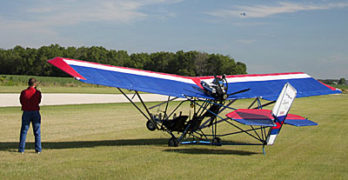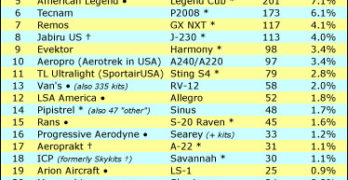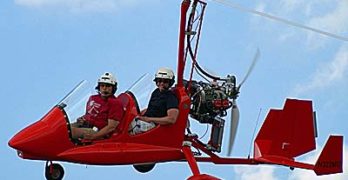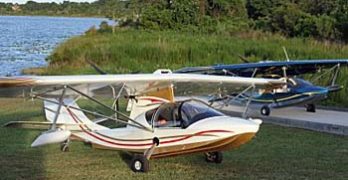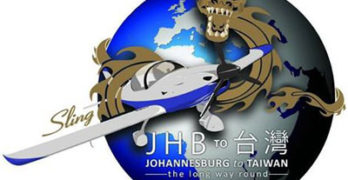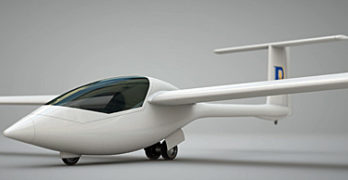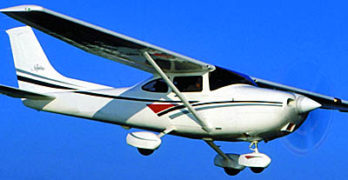Aviation news outlets and social media are buzzing with the news that Quicksilver Aeronautics is closing its factory. For example, Aero-News Net — always a quick reporter of such news — is calling the event a “dissolution.” This is not incorrect; it comes directly from a document previously issued by Quicksilver’s lawyers (see more below). However, letters from lawyers often portray things in very black and white terms and the situation is somewhat more nuanced than that.
For several years, I have known the principals of the company — Will Escutia and Daniel Perez — and spoke with both of them this morning (Tuesday, October 20th, 2015). What follows is directly from the horse’s mouth, as they say.
In any such fluid situation, the news is more difficult to accurately report because not every decision is made. For example, if the company was bankrupt and going completely out of business (which phrase was used by another aviation reporter), the predicament might simply be reported as such.
Search Results for : MG 21
Not finding exactly what you expected? Try our advanced search option.
Select a manufacturer to go straight to all our content about that manufacturer.
Select an aircraft model to go straight to all our content about that model.
SLSA N-Number Registrations in First Half 2015
The U.S. market for Special Light-Sport Aircraft continues to grow at steady pace, modestly better than the trend for single engine piston certified aircraft as reported by the General Aviation Manufacturers Association for the first half of 2015.
SLSA deliveries in the half-year period totaled 97 units, with 91 of those coming from 15 manufacturers, showing that the famous 80/20 rule still generally applies … more than 80% of the market is supplied by less than 20% of the builders. It also implies the majority of those companies who previously earned FAA acceptance for their LSA models are either quite slow or inactive in the U.S. market.
We’d prefer to describe vigorous growth but the so-named Great Recession seems to be lingering on; at least it appears the much-talked-about recovery has left most of aviation still looking for improved business. Evidence of a still-troubled global economy is even clearer when you consider the wild stock market gyrations of recent weeks.
Gyroplanes and Autogyros … Same or Different?
(Images updated 9/2/15)
Are you intrigued by airplanes that spin their wings? Helicopters are out of the budget for most pilots but have you ever sampled a gyroplane? Whatever your answer, you should know that Rotax Aircraft Engines reports selling more 912 powerplants to gyro producers than to any other airplane segment. Most of those are sold outside the USA.
Americans like and do fly gyroplanes, of course. Most associate the type with the Bensen Gyrocopter, but the history record reveals its overseas start. Again today, gyros are predominantly a non-U.S. phenomenon, a fact LAMA is trying to change through its advocacy efforts to press FAA to reconsider the fully built SLSA gyro as once envisioned under the SP/LSA rule.
While most pilots can identify a gyroplane, they mentally picture an aircraft with the engine in the rear. That isn’t always the case, though.
How about the “odd” looking gyroplane pictured with this article, with its tractor engine?
Transcontinental Gyroplane Record Underway Now
As I write this, an intrepid gyro pilot is “out on the course” as we used to say when I flew in hang gliding competitions. By the time you read this, he may be all the way home. What a great effort! I hope Paul earns a world record but either way, I feel certain he enjoyed the experience.
“Paul Salmon is currently crossing the country in a record attempt in a Magni M22,” said Greg Gremminger, importer for the Italian Magni Gyro line of aircraft. “He is trying to set the record for a gyroplane to cross the country in both directions.”
Greg added that Paul is on pace to set the record time, back and forth, in just four days. “This attempt is in the 500 kilogram + (1,100 pound) gyroplane category,” added Greg. “There are no records established for this category. The under 500 kilogram category gyro record is currently about 14 days.
The World of LSA and American Opportunities
Updated 8/21/15 — This article has been updated with a reader comment seen at the bottom.
When the SP/LSA regulation was announced 11 years ago nearly all registered Light-Sport Aircraft originated in Europe. Indeed, the first two accepted as SLSA were the Evektor SportStar and Flight Design’s CT series. For several early years, Europe accounted for more than two-thirds of all LSA brands in the USA.
However, in a decade, a lot has changed.
Now, American companies have had time to shift from kit making (a very different business model) or have developed brand-new aircraft or offer a revised version of an existing model to meet the ASTM standards so they could gain FAA acceptance.
American companies are also starting to make inroads into other countries that accept ASTM standards.
Some countries simply copy FAA regs while others accept the ASTM standards set and then layer on some of their own regulations.
4 things to See at EAA AirVenture Oshkosh 2015
The “Big Show” is just days away, so of course, journalists and readers are asking what will be present? The question is worthwhile, but often the most interesting discoveries are not foretold either to maintain secrecy or due to the last minute scramble to make a new project showable. Here are four products attendees may want to investigate. Watch for more previews.
“What a journey so far, wrote Jordan Denitz, spokesman for The Airplane Factory USA! Globetrotters Mike Blyth with Patrick Huang of The Airplane Factory Asia have completed their first three legs on their way around the world in a Sling powered by the Rotax 912iS. Starting in Johannesburg, South Africa, they traveled to Namibia, Ghana, and Cape Verde.
On Monday they were taking a well deserved rest after 37 hours and more than 4,000 nautical miles logged so far. “They are gearing up for the biggest hop yet, crossing the Atlantic,” added Jordan.
Super Duper Legend Cub with 180 Horses!
Whoa, big boy! When you have huge power available, you need to … well, go have fun! I’ve covered the Super Legend before (article & video), which had the multi-fuel, electronic ignition 115-horsepower Lycoming O-235 installed. Certainly that was and remains a solid powerplant but now the company has added a Titan engine that pulls like a team of stallions. Call it the Super Duper Legend Cub.
As sales of Legend Cubs and similar aircraft have shown, pilot interest in Cubalikes is strong. American Legend recently logged their 10th anniversary; they’ve been around since the LSA sector first arrived on the scene. However, they haven’t simply made the same old airplane in the same old way. Now welcome Super Legend HP.
Before Sun ‘n Fun 2015, the Sulphur Springs, Texas company announced they had added, “a host of new features for our Super Legend, adding functionality, comfort and safety to the lineage of Legend Cub aircraft.
Innovative Hybrid: Jet Power with Electric Motor
Some people, myself included, love soaring flight. As the following article from Dave Unwin explains, to use his words, “Soaring flight exercises a fascination that is both difficult to explain and hard to resist, sometimes called ‘three-dimensional sailing.’ Flying a heavier-than-air machine for several hours and hundreds of miles by using the atmosphere as the fuel possesses an undeniable attraction.” As he further explained in a longer article, the downside is getting airborne for soaring flight. Various alternatives have been explored. Some were reasonable; others were too marginal to be enjoyed. In the following piece Dave tells about a new aircraft that might solve this problem, one that can fit England’s innovative SSDR 300 (kilogram) category. —DJ
Article Updated 6/17/15 — ProAirsport announced, “We have now released a priority price of 39,950 British pounds (about $63,000). More details can be found on our website.” This is an excellent value for a motorglider.
Analyzing Statistics on Worldwide Aviation
Update Notice — The following article has been updated to reflect additional information. Please read at this link.
Thanks to a solid effort by GAMA, the General Aviation Manufacturers Association, I have data that can be used to assess the numbers of recreational aircraft around the world. That organization is significantly focused on business aircraft but did include all levels of aircraft in their country-by-country review. Whatever the actual level of accuracy — GAMA is wholly dependent on the data the organization received from various CAAs in each country — GAMA’s data is some very useful info and I am in their debt for the information discussed in this review.
In addition to GAMA having to use whatever each country reported, the methods of reporting were not consistent. For one noteworthy example, several countries listed as their smallest aircraft those weighing 5,700 kilograms (12,540 pounds), which represents far larger aircraft than your typical four-seat GA aircraft and certainly any recreational aircraft.
Exciting Development Projects at Aero 2015
Aero is such an interesting event for many reasons. Among the most significant of these are the large number of aircraft introductions or the newest development projects one discovers in the vast gymnasium-sized halls … eleven of them in total. It can be hard to cover all the square meters, which although not as enormous as giant outdoor American shows, are nonetheless so packed with aircraft that one gets sensory overload before you’ve seen them all.
The world premiere of BlackWing was such a project. Here is the first light aircraft I’ve seen from Sweden; others may exist but I’m not aware of them. This sleek speedster uses the ubiquitous Rotax 912 to achieve what they state as stunning speeds up to 400 kilometers per hour (250 mph or 217 knots) and this from only 100 horsepower! Of course, this won’t work as a Light-Sport Aircraft but BlackWing is LSA in size and concept other than its blazing speed.
- « Previous Page
- 1
- …
- 54
- 55
- 56
- 57
- 58
- …
- 94
- Next Page »


